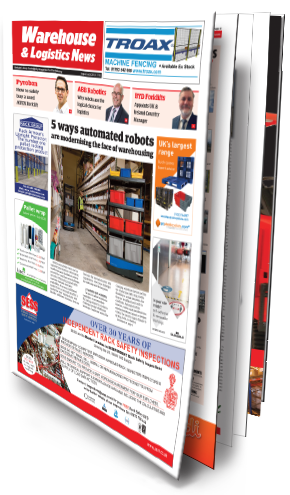 Welcome to the August 1st issue of Warehouse & Logistics News. It has been encouraging to see the country emerge from lockdown following the wonderful work done by the NHS and care workers. The next challenge for the country will be an economic one. Following the lockdown, the UK faces the prospect of a shrinking economy. One consequence of this may be high youth unemployment.
Welcome to the August 1st issue of Warehouse & Logistics News. It has been encouraging to see the country emerge from lockdown following the wonderful work done by the NHS and care workers. The next challenge for the country will be an economic one. Following the lockdown, the UK faces the prospect of a shrinking economy. One consequence of this may be high youth unemployment.
CLICK HERE TO LAUNCH THE DIGITAL EDITION OF WAREHOUSE & LOGISTICS NEWS MAGAZINE
Logistics has something of an image problem, says Peter Ward of the UKWA in his column. That image is one of poor conditions, repetitive work and low pay. Yet Covid-19 has shown us that key workers are not only health workers but also delivery drivers, forklift truck operators, pickers and packers. With these workers essential to our daily lives, it’s time to reward them with decent pay and conditions.
Another solution to the labour shortage problem may be robotics, as our cover story from 6 River Systems points out. Automated robots can be rented, transferred among facilities and brought online quickly to adapt to changing needs, providing necessary scalability in the modern warehousing world. Robots enable a base-level of social distancing within a warehouse – in the fight against COVID-19, they are more efficient and require fewer associates in the building than manual operations to achieve the same throughput. Collaborative mobile robots have been designed to leverage AI and machine learning, allowing the systems to make data-driven decisions in real-time. They also provide a faster ROI and streamlined onboarding and training.
This theme is continued in our Warehouse Automation and Robotics feature. To meet the rapidly growing consumer demand for e-commerce, warehouses need automation and robotics. Robots and other automated machines are getting cheaper. They can help make inefficient, imprecise and potentially unsafe manual routines efficient, reliably precise and much safer. They also offer no limits on the number of shifts that can be worked.
With poor lighting being the biggest single consumer of electricity in warehouses, taking up 34% of warehouse electricity bills, switching to light emitting diode (LED) lighting is the quickest influence operators can have on energy use and overheads compared to any other energy saving solution. The main advantage of LED is its energy efficiency. LEDs need far less electricity to power than traditional incandescents, halogen light bulbs and energy efficient light bulbs (CFLs), says our Warehouse Lighting feature. There are also environmental benefits: with lighting accounting for nearly 6% of global CO2 emissions, a global switch to LED technology could save over 1,400 million tons of CO2 and avoid the construction of 1,250 power stations.
Enjoy reading the issue.
James Surridge
Publishing Editor




Comments are closed.